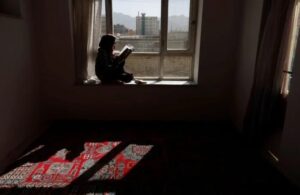KABUL (SW) – A number of women suffering from rheumatism voice their frustrations regarding the lack of medical facilities in health centers, mostly in public hospitals.
They say that inadequate healthcare services, as well as, financial difficulties prevent them from receiving proper treatment for their condition.
These patients, ranging in age, attribute their illness to excessive contact with water and hereditary factors. They describe severe pain in their legs, arms, and muscles as key symptoms of the disease.
Shabnam, a Kabul resident suffering from rheumatism for the past ten years, said: “The severe pain in my legs and arms, along with muscle immobility, are the main symptoms. The lack of treatment options in public hospitals and economic challenges have made it impossible for me to seek treatment.”
According to Shabnam, there are “no facilities” in public hospitals. “I wish they would designate a department for rheumatism to provide at least free consultations. Instead, we are forced to visit private hospitals. If you have the means, you can seek better facilities and quality medications; if not, you end up buying medicine and visiting ordinary hospitals or, worse, forgetting treatment altogether.”
Similarly, Silay, another Kabul resident who has been suffering from rheumatism for two years, shared her experience of inadequate medical care and misdiagnosis in local hospitals, saying, “When I visited a public hospital, the doctor couldn’t make a proper diagnosis. Firstly, doctors pay no attention to patients, and secondly, they can’t provide accurate diagnoses due to lack of resources. The medications they prescribe are either very expensive or ineffective. Public hospitals have very limited resources, and there is a lack of diagnostic materials.”
Fawzia, who believes excessive contact with water has caused her rheumatism, also explains: “I had examinations; my joints hurt. When I put my hands in water, they would swell and itch painfully. I visited a doctor, but the medication didn’t help. Eventually, I consulted a traditional medicine expert who indicated that my rheumatism was more severe than previously assessed. He prescribed some medicine, which alleviated the pain.”
Zeba, who links her condition to heredity, added, “My grandmother also suffered from rheumatism for nearly 20 years. Both my grandmother and I have this illness, while no one else in the family has it besides us.”
Medical professionals acknowledge that rheumatism is more prevalent in women due to genetic, environmental, and hormonal changes. The complexity of the disease and the existence of various forms make it challenging for doctors to diagnose.
Sanaullah Quraishi, a general physician, says: “Rheumatism is a complex disease with many variants. One major reason doctors misdiagnose it is that several conditions present similar symptoms.”
Additionally, Adil Aryan, a pediatric specialist at Indira Gandhi Children’s Hospital, agreed: “Rheumatism is commonly seen in women, and one reason for this increased prevalence is the decline in estrogen levels as they age, which diminishes the protective mechanism provided by this hormone.”
Spokesperson for the de-facto Ministry of Public Health Sharafat Zaman Amarkhil, however, claims that adequate facilities for treating rheumatism are available in public hospitals in Kabul and the provinces.
“For orthopedic patients, we have designated areas in the provinces. The Wazir Akbar Khan Hospital in Kabul is specifically allocated for orthopedic patients. We have active and professional staff providing services there. Patients in the provinces can also access our internal and orthopedic departments, where services are ongoing,” he said.






